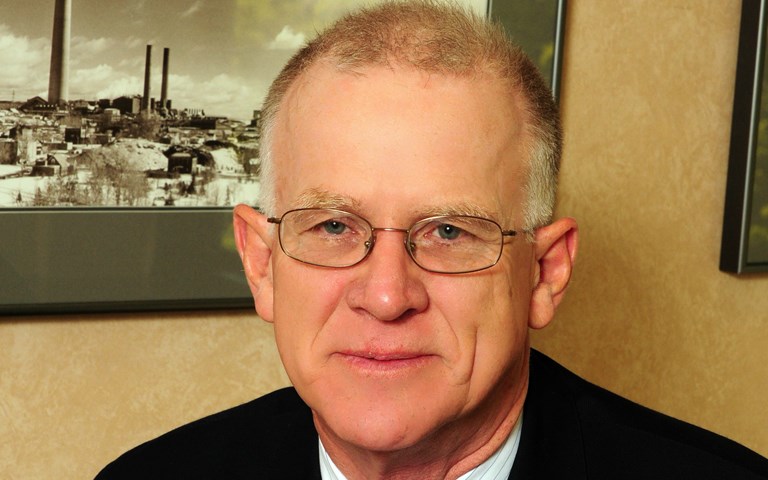To understand innovation in mining we must first understand the business context. Mining is a commodity business, highly dependent on business cycles, with high capital and fixed costs. Startups of new operations and shut-downs of existing ones are slow. Ore quality and market access have traditionally led to extreme riches. “Business pull” rather than “technology push” drives development and implementation of new technology.
Innovation plays three specific roles: It establishes and expands businesses, e.g. product development in 20th-century aluminum companies; it improves the business, e.g. the adaptation of novel technologies for cost savings; and it cleans the business of environmental and workplace hazards.
Innovation in mining and process metallurgy is expensive. Because of the uncertainties and variation underlying these processes, extensive laboratory and pilot plant tests are required at every scale. Known as the “Power of 10,” each step in the development/commercialization process costs 10 times more than the previous. Therefore, there is hesitancy to pursue new developments unless promised rewards are great and the uncertainties small.
Costs and business cycles interrupt development projects. Over the course of 36 years, I worked for three organizations that created profitable businesses from technology development and were strong supporters. However, I experienced seven episodes of layoffs and incentivized early retirements. Colleagues had similar or even more disruptive experiences. Nevertheless, since 1970, the mining industry developed and implemented revolutionary technologies: SAG and Isa/Verti mills, high-pressure grinding rolls, column flotation, bath smelting, pressure leaching of sulfides, diesel-powered mechanized mining equipment, leach/solvent extraction of copper, carbon-in-pulp gold leaching, continuous casting, automation, and equipment scale-up to sizes unimaginable for the mid-20th century.
Related: CMIC CEO Carl Weatherell on the power of planned innovation
But the world of mining has changed. By global standards, Canadian mining companies are small. The center of gravity has shifted from North America to Australia and China. Corporate research laboratories have closed or converted to technical service centres. Mining gets smaller proportions of provincial and federal government support for research and development. The old models will not work. Transforming technology development requires new ways of approaching old and new problems. Here are three proposals:
Have big thoughts about small things
Much of the productivity improvements over the past quarter century have resulted from well-executed scale-up of existing equipment: large scoop-trams and trucks, massive grinding mills and flotation cells. This approach has lost its efficacy. We must conceptualize and engineer systems that do more with less. The Rail-Veyor ore transport system and Woodgrove’s staged flotation reactor are developing technologies showing the way in this domain. The research work of professor Robert Pelton of McMaster University on functionalized nano-particles for flotation collectors and that of professor Lesley Warren of the University of Toronto on bacterial activity in tailings areas testify to the importance of the ultra-small scale.
Work together and think green
With universal problems and expensive technology development, collaboration is imperative. The potential benefits have been recognized for years but execution has been deficient. Encouraged by governments, corporations sponsor research on a local or regional basis for “license to operate” purposes as opposed to problems of national importance. As a result, organizations designed for collaborative work – COREM, CAMIRO, MIRARCO, IMII, CCPM, CEMI, CMIC – are either defunct or struggling. Corporations must demand requisite consolidation and provide unified, long-term support. Canada can look to Australia’s AMIRA as a model. Additionally, we should ask ourselves whether cross-border cooperation with U.S.-based organizations is possible.
With the scale of modern mining and metallurgical complexes, we are no longer just mining, mineral processing or metallurgical engineers. We are earth engineers. Our activities can impact the earth and its inhabitants in profound ways – both negative and positive. “Thinking green” means that environmental and social concerns are transformed from hurdles to be overcome to objectives to be internalized. This shift will broaden our horizons, open new opportunities and promote intelligent, productive technology development. Mining’s soiled image will be cleansed. Perhaps the endeavor will attract more women to the industry.
Think L-O-O-N-G
A decade or so ago, fickle investors demanded that mining CEOs invest in multi-year, high-volume, high-risk projects. Five years ago, the same investors mandated fire sales of these assets and firing of the CEOs. Spending on both exploration and technology development was slashed.
Related: Can companies resist the temptation of making the same mistakes in the face of an inevitable up cycle?
Net present value, discounted cash flow and internal rate of return are sacred financial metrics. But the assumed price of the commodity, a factor that no one can control or reliably predict, is the chief determinant. Focusing on the five- to ten-year term, the metrics give little recognition to the fact that mines and metallurgical plants typically have a 25- to 50-year life. These short-term measurements cripple long-term technology development. Financial measurements must compare the relative merits of projects and take a longer view of profits.
Mining, with its extensive movement of earth and consumption of energy, water and potentially hazardous chemicals, combined with the necessity to dispose of vast amounts of waste, creates costs and liabilities not accurately appearing on balance sheets. The sooner the real costs of anthropogenic climate change, water consumption, tailings disposal and liabilities are accurately reflected in cost accounting and, as a result, selling prices, the sooner technology development and implementation to ameliorate these costs will commence.
Technology development in sustainable mining
So what is the role of technology development in a modern mining company? To be successful, a mining enterprise requires good governance and business metrics. Equally important, it must have efficient and safe operations. But the sustainable company will integrate technology development firmly in its DNA and operate at the overlap of these three disciplines.
When these principles are enshrined, we will realize the true potential of innovators to revolutionize and improve the way people live.
Sam Marcuson served as vice-president of base metals technology development for Vale Canada Limited, retiring in 2013. From 2015 to 2017 he led CMIC’s efforts on energy efficient comminution.




